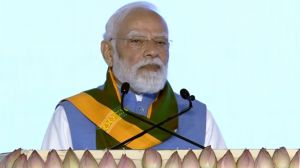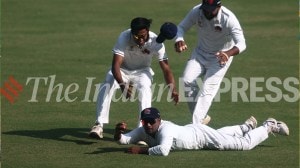Shot to fame
It’s about shots, big and bigger ones. That’s precisely how Twenty20 and one-day cricket...

It’s about shots, big and bigger ones. That’s precisely how Twenty20 and one-day cricket has evolved, and is now considered a completely batsman-oriented game. Yes, the traditional cover drives are still there; so are the cuts, hooks and pulls, but the changing demands of the game has brought about several modifications in these basic shots. The Indian Express takes a look into five new shots, invented in recent times to have emerged as the hot properties in Twenty20 and one-day cricket:
•Misbah shot: Few shots that are named after the batsman. This one became popular during the Twenty20 World Cup after Pakistan’s Misbah-ul Haq played it to get out and lose the T20 final against India. Despite its origin, this shot has reaped much benefits and is a variety of the sweep and the scoop shot played towards fine-leg by walking across from the line of the ball, and lifting it over short-fine leg— most played against fast bowlers, using the pace of the ball to give momentum.
•Walk-down-the-park shot: Popularised by Robin Uthappa when he hit Brett Lee and other quicker bowlers with this breathtaking shot. It’s a brazen modification of the straight drive and is played slightly in the air right past the bowler and between mid-on fielder. As the bowler jumps into his final stride, the batsman walks towards the bowler sideways with a stance to meet the pitch of the ball midway through the 22-yard pitch and then bangs it over the on-side with a horizontal bat. Hit against seam bowlers, it is spectacular when played against the quickest.
• Upper cut: First invented in 1996 World Cup by Sanath Jayasuriya and was lost. Re-invented again by Sachin Tendulkar in 2003 World Cup, and now again it has become a fad with Virender Sehwag and Adam Gilchrist making it popular. It’s a variety of the cut shot, deliberately played in the air and over the in-field by slicing the ball and getting the bat to hit under the ball to give elevation and played towards point or third-man region — played only against fast bowler on a wicket that has plenty of bounce and also used to negate the bowler’s effectiveness.
•Ambidextrous shot: Played by Sachin Tendulkar against Australia in Kochi, and more recently by Younis Khan, even in the Test series. It’s a variant of the reverse-sweep but unlike the the reverse shot played normal stance, the entire batting stance here is quickly changed — a left-hander becoming right-hander and vice-versa and then hit. Used only against spinners who can turn the ball big and is employed by the batsman to hit the shot in the direction of the ball turning away from him. It’s played by a right-hander against leg-spinner or left-arm spinner and by a left-hander to an off-spinner. Former Australian coach John Buchanan called the ambidextrous shots as the future and has insisted on having more ambidextrous batsman in team.
• Half-drive, half-pull shot: Shahid Afridi, Chris Gayle and Mahendra Singh Dhoni are the three most revered batsmen who employ the shot to maximum effect. It’s played mostly against seamers or spinners who are flatter and quicker through the air. The batsman is usually on the backfoot ready to pull the ball, and then with the weight on the backfoot forces the ball through the ‘V’. Big forearms and brutal power is the important ingredient in this shot and is played form the crease. There are two varieties of this shot — one along the ground and one over the ropes.


- 01
- 02
- 03
- 04
- 05





























